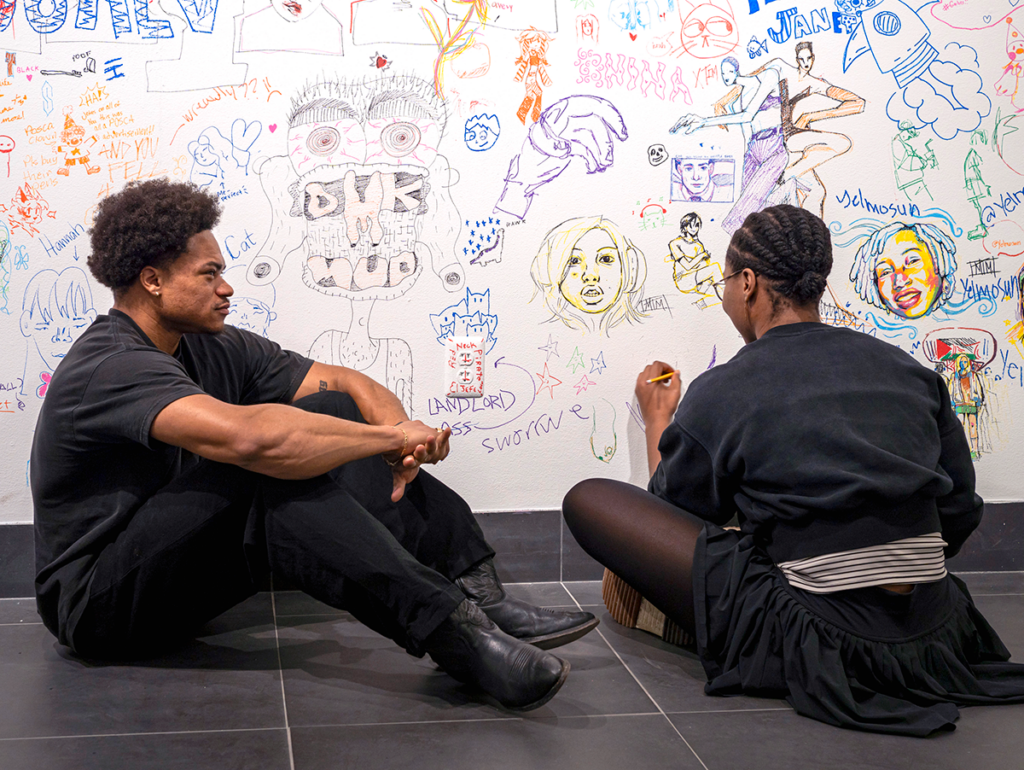Grace Preston
Professor
Texas State University
My paper recounts a collaborative initiative between myself and a cohort of undergraduate design students that we named the Center for Drawn Togetherness. The Center was “founded” in response to a lack of design student cohesion and camaraderie as our institution transitioned back to a fully in-person model post-pandemic. To address these issues, we conceptualized a series of interlocking illustration events that culminated in an exhibition. Each event asked participants to work together, challenging the idea that drawing is a solitary activity and exploring how drawing together could strengthen bonds among participants.

In the first event, a risograph workshop, participants collaboratively designed and printed an official “currency” for the Center. The second event allowed participants to earn “money” by contributing to a collaborative mural, asking them to respond to prompts that could be completed with a partner. The culminating event allowed participants to spend their “money” in a student-run illustration pop-up shop. All happenings were housed in an exhibition that doubled as a gathering space for design students, with student collaborators facilitating the events.
Event planning sessions emphasized Sasha Constanza-Chock’s principles of Design Justice, particularly their assertion that communities should co-lead and control design projects intended to benefit them (2020). Since I was concurrently teaching my student collaborators, planning sessions also challenged the traditional roles of teachers and students, proposing that we can operate as equals.
The workshops received positive feedback from participants, which was gathered through surveys and interviews after the events concluded. The Center plans to use this feedback to develop new initiatives in this upcoming school year. We will continue to investigate how in-person drawing events can potentially promote empathy among students, advocate more collaborative relationships between teachers and students, and encourage young designers to feel ownership over their educational experience.
This design research is presented at Design Incubation Colloquium 11.1: Boston University on Friday, October 25, 2024.
